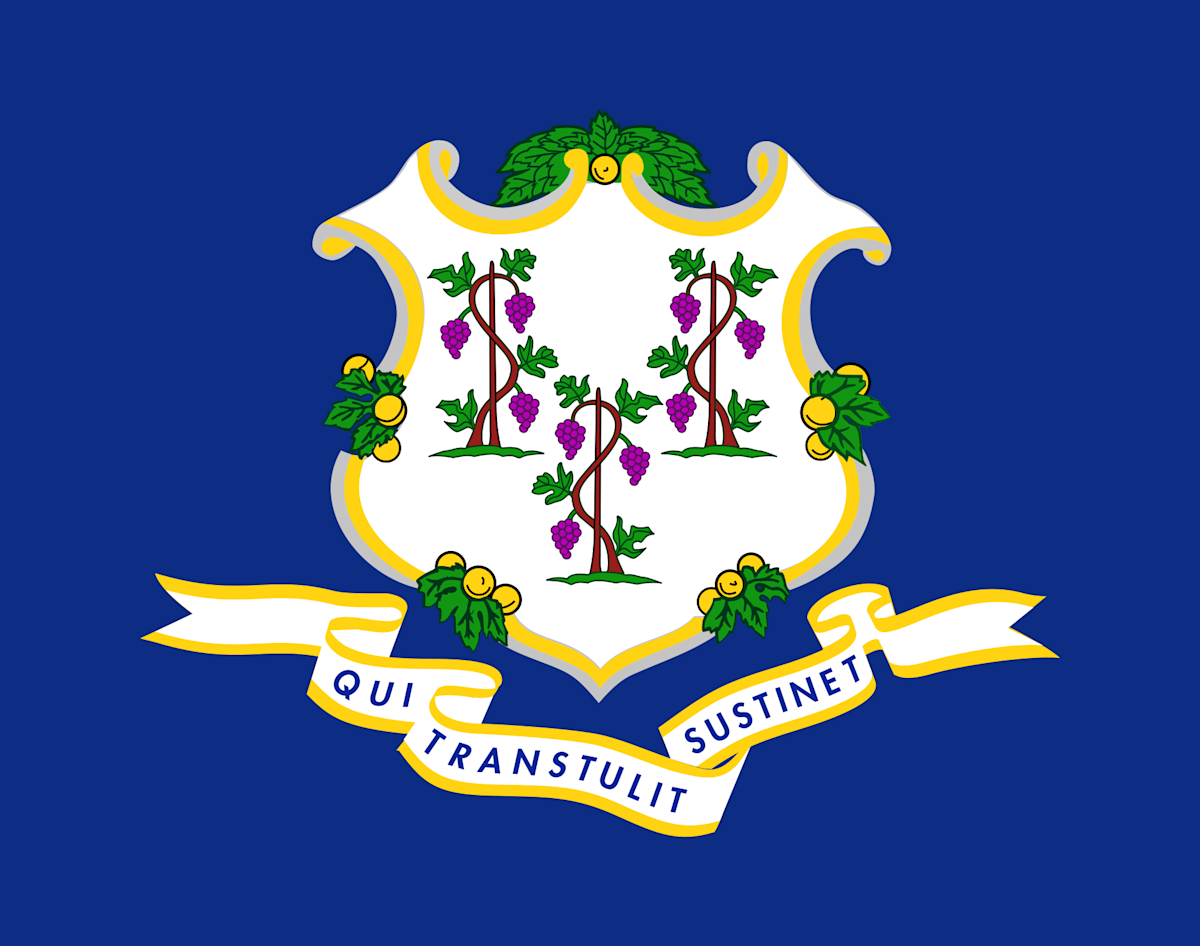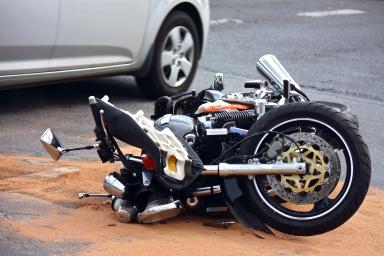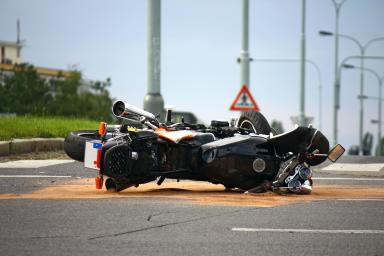Connecticut Motorcycle Laws

According to the National Highway Traffic Safety Administration, motorcyclists are estimated to be 29 times more likely than other road users to die in traffic accidents and four times more likely to be injured. In Connecticut alone, more than 50 motorcyclists are killed every year. In 2021, the most recent data showed 68 motorcycle fatalities, a 30-year record high.
As tragic as these figures are, they are unlikely to shock anyone. Motorcycles are inherently more dangerous than passenger vehicles. They have less visibility and stability during maneuvers and carry a higher risk of more severe injury in the event of an accident.
The increased risks make it even more crucial to be fully aware of and fully compliant with all rules of the road. Let’s begin with some fundamentals.
To operate a motorcycle in Connecticut, riders must:
Be over the age of 16
Have a Connecticut motorcycle license endorsement
Register their motorcycle with the state
Obtain insurance coverage that meets the minimum state requirements
This guide examines key Connecticut motorcycle-related laws and rules around liability, insurance, and damages.
Noise Restrictions
According to the Connecticut General Statute Section 14-80, all motor vehicles must be equipped with well-maintained mufflers. The maximum allowable decibel level for various types of motor vehicles is determined according to the age, weight, speed, and road surface. The local DMV commissioner is authorized to run noise tests on all vehicle types, including motorcycles.
Noise limits are based on the nature of the test site where the noise test is being conducted. Under Connecticut law, the decibel limits for motorcycles are as follows:
At soft test sites (grass, dirt, etc.): 78dB under 35 mph/82 dB over 35 mph
At hard test sites (concrete, pavement): 80 dB under 35 mph/84 dB over 35 mph
These restrictions only apply to motorcycles manufactured after January 1, 1979. Vehicles weighing less than 10,000 pounds made prior to that date can emit 76-82dB; vehicles weighing more than 10,000 pounds made after that date can emit 86-90dB.
Restrictions are enforced by local law enforcement or during inspections. Bear in mind that these are state restrictions - local jurisdictions may have their own ordinances for noise limits.
Motorcycle Helmet & Eye Protection
Between 2015 and January 2019, fatal motorcycle crashes accounted for an estimated 17% of fatalities on the road, according to data from the University of Connecticut. In 2015, the State Department of Transportation found that more than 50% of those killed or seriously injured in motorcycle accidents were not wearing helmets.
Despite these figures, Connecticut is one of 31 states that does not require adults to wear helmets. Mandatory helmet use is only required for riders and passengers under 18 and those operating motorcycles with a learner’s permit. The helmet must meet federal standards and bear the DOT (Department of Transport) symbol on the outer surface. Failure to wear a helmet could result in a fine of up to $90.
While helmets are not a legal requirement for over-18s, they are strongly advised. Studies have shown helmets to be about 37% effective in preventing motorcycle deaths and 67% effective in preventing brain injuries.
Connecticut requires riders and passengers to wear eye protection such as a face shield or goggles. Motorcycles fitted with windshields are exempt.
Licenses
Riders must first earn a standard driver’s license, which can be updated with a motorcycle endorsement, to obtain a motorcycle permit in Connecticut. The process to obtain a motorcycle endorsement is detailed here. It requires passing a knowledge and vision test and the completion of a training course approved by the Department of Motor Vehicles.
Learner’s permits can be obtained before applying for the endorsement. Learner’s permits are valid for 60 days, with an option to renew for an additional 60 days.
Permit holders are restricted to riding:
Only in Connecticut
Only during daylight hours
With no passengers
On local roads only - no multi-lane highways
With state-approved safety gear (including, for those under 18, a helmet)
After this period, riders can take the DMV-approved safety course, study for their test, and earn their motorcycle endorsements. The 16-question written test is based on the Connecticut Motorcycle Manual and the Connecticut Driver’s Manual.
To apply for a motorcycle endorsement, Connecticut requires the following:
A state driver’s license
Proof of completion of a DMV-approved safety course
For riders under 18, a notarized Certificate of Parental Consent form
A completed Non-Commercial Driver’s License application
Payment for the vision and knowledge tests
Riders who pass both practical and written tests will receive an “M” endorsement on their driver’s license.
Passengers
Before being allowed to carry passengers, Connecticut requires new riders over 18 to wait 90 days and new riders under 18 to wait six months. Once eligible to carry passengers, all riders must ensure their motorcycles are equipped with a permanent passenger seat attached firmly to the back of the operator’s seat.
Lane Splitting & Filtering
According to state law, motorcyclists in Connecticut share the same rights and privileges as other road users, including the right to full use of a single traffic lane. They are prohibited from riding two abreast in a single traffic lane and operating their motorcycle between lanes, a practice known as lane splitting.
Lane filtering (i.e., lane splitting when traffic is standing still) is also prohibited. Lawmakers have repeatedly tried to legalize lane splitting in Connecticut, but the practice remains illegal as of February 2023.
Headlights, Turn Signals, & Other Equipment
Connecticut General Statutes section 14 – 96 (a) states that motorists must use headlights between 30 minutes after sunset to 30 minutes before sunrise. Headlights are also required when driving in poor weather where visibility is 500 feet or less or there is precipitation.
Equipment requirements mandated by Connecticut law include:
Rearview mirrors
Fenders (both wheels)
Handlebar grips no higher than the rider’s shoulders
Motorcycles aren’t required to have turn signals installed. Where a motorcycle lacks turn signals, the rider must use hand signals to indicate their intentions to other road users.
Connecticut Motorcycle Insurance Requirements
All motor vehicles in Connecticut, including motorcycles, must provide proof of liability insurance covering bodily injury to other people and damage to the property of others.
The state requires minimum coverage of:
$25,000 for bodily injury liability or death of one person
$50,000 for bodily injury liability or death of two or more people
$25,000 for property damage liability
Uninsured motorist and underinsured motorist coverage for bodily injury are required in Connecticut.
Though not required by law, motorcyclists are strongly encouraged to obtain additional coverage such as collision and medical payments insurance.
How Much Can Someone Sue for a Motorcycle Accident in Connecticut?
Unless settled out of court, motorcycle accident claims are typically prosecuted as personal injury lawsuits in court. Settlement values vary wildly according to the specific circumstances of the accident. The amount awarded will depend on factors like the type and extent of injuries caused, recovery time, income, earning ability, age, and health and insurance coverage.
Unlike many states, Connecticut places no cap on the compensatory damages an injured party is permitted to receive. That includes economic damages such as:
Cost of medical bills resulting from the accident
Future medical expenses
Cost of hospital stays, diagnostics, imaging, and other medical tests
Rehabilitation costs
Physical therapy
Prescriptions
Medical equipment
Lost wages
Lost earning capacity
It also includes general or non-economic damages not quantifiable as a cash value. This includes:
Pain and suffering
Mental anguish
Emotional stress
The testimony of the injured party and their family and friends can help establish a legal claim for general damages. Medical professionals and other expert witnesses can also testify as to the extent of an accident’s mental and emotional toll on the victim. Demonstrating the presence of lifelong injuries, physical or otherwise, may support any claim for non-economic damages.
Punitive damages designed to punish and deter the defendant are generally subject to a cap equal to the sum of attorneys’ fees and the cost of litigation.
To maximize any potential payout in a personal injury claim, consult a legal expert as soon as possible after the accident.
The Statute of Limitations in Connecticut
In Connecticut, plaintiffs must act to recover damages from a defendant within two years of the incident. This time frame is called the statute of limitations.
The statute of limitations applies to the vast majority of personal injury cases, whether they fall under the liability principle of negligence (as with most motor vehicle accidents) or intentional tort (which usually applies to civil actions relating to assault).
Section 52-584 of the General Statutes of Connecticut states that the clock begins running from "the date when the injury is first sustained or discovered or in the exercise of reasonable care should have been discovered."
If the injured party misses the deadline, they will ordinarily be unable to file a claim, no matter how grave their injuries or how severe the negligence is. For plaintiffs that wish to argue that the beginning of the timeframe should start later than the date of the accident, the burden of proof is on them to demonstrate that the injury was not reasonably discoverable in the immediate aftermath.
There are a couple of exceptions to the two-year limit.
If the defendant leaves the state for any period of time following the accident before a lawsuit can be filed, the period of absence won’t be counted as part of the two years. Even under this exception, the filing deadline will not be extended more than seven years.
If the defendant takes steps to fraudulently conceal their liability, the statute of limitations may not start to run until the injured party discovers the fraud.
Additionally, the time limit may be extended if an injury is not discovered until a period of time after the accident (e.g., internal injuries).
Statutes of limitations are designed to keep legal actions timely and encourage claimants to act swiftly. An experienced personal injury attorney specializing in motorcycle accidents in Connecticut can help navigate the legal system.
Is Connecticut a No-fault State?
No. Connecticut is an at-fault state, meaning the at-fault driver is liable for damages such as personal injuries and property damage. Furthermore, motorcyclists in Connecticut can seek compensation for even basic medical expenses following an accident.
Connecticut operates a modified comparative (51%) negligence principle. This means drivers can't collect any damages from the other parties if they are 51% or more at fault.
Expertise.com StaffAuthor
Step into the world of Expertise.com, your go-to hub for credible insights. We don't take accuracy lightly around here. Our squad of expert reviewers, each a maestro in their field, has given the green light to every single article you'll find. From rigorous fact-checking to meticulous evaluations of service providers, we've got it all covered. So feel free to dive in and explore. The information you'll uncover has been stamped with the seal of approval by our top-notch experts.


![¿Cuál es la indemnización promedio de las demandas por accidentes de moto? [2023]](https://images.ctfassets.net/k00sbju4hbzq/590XSDSoqNVs6XSMNY5s3G/a969ee3bedaaf9016cec601fc30f495b/average_motorcycle_accident_settlement.jpg?fit=fill&w=384&q=75)

